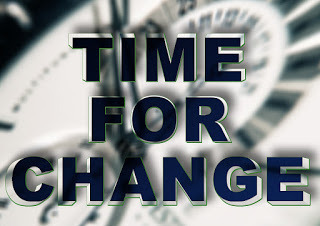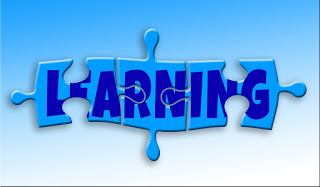Pearl Zhu's Blog, page 1356
March 16, 2016
Three IT Movement to Improve Organizational Maturity
 Due to the “VUCA” characteristics of digitalization, organizations today need to build a unique set of business capabilities and enforce organizational democracy to adapt to changes, accelerate innovation and achieve operational excellence. Information and Technology play a pivotal role in such a transformation, here are three digital IT movement to harness business competency and improve organizational maturity.
Due to the “VUCA” characteristics of digitalization, organizations today need to build a unique set of business capabilities and enforce organizational democracy to adapt to changes, accelerate innovation and achieve operational excellence. Information and Technology play a pivotal role in such a transformation, here are three digital IT movement to harness business competency and improve organizational maturity.Agile Movement: Agile sees the world through the lens of change, and Agile mindset puts emphasis on three “I”s: Interaction, Incrementalism and Improvement. It is not only the methodology for software development which largely resides in the stochastic or empirical domain, but a philosophy and a set of principles to run IT and business as a whole. There is a meta value for agility -becoming agile over following Agile. To scale the agile practices to an enterprise. You don't need to get bogged down by the word Agile with a capital ‘A.’ But utilize the values and principles to scale an enterprise process without labeling it Agile. It values effectiveness in delivering value over efficiency in delivering schedule & budget. The simple agile assessment questionnaires include: 1) Are your employees / team members enjoy working? 2). Is your project financials healthy? 3). Does your customer smile after every delivery, etc. An agile organization is one that is open to change and can adapt readily when change is needed. The defining characteristic of being agile is that it can adapt readily when change is needed. Business agility is an ultimate goal the organizations pursue to reach their maturity.
Cloud Movement: Cloud Computing by itself is not the answer. It comes down to how your organization will rethink how it offers IT services to achieve business agility. There are several ways an appropriately designed cloud environment can bring speed, efficiency, agility to organizations -- Robust change capability, as well as allow IT and business to spend more resource on innovation and top priority business strategy. Cloud Computing doesn't suddenly make IT organizations faster and more efficient, but it does provide overall agility that benefits many businesses. If your organization wants to figure out how it can improve customer's experience and is willing to "change," cloud computing with the proper management can be a possible enabler. And the elastic nature of the cloud is a good fit if your IT demand is very dynamic, expanding or contracting in significant ways that need to be addressed and provisioned quickly. Looking ahead, the pace of adoption could well accelerate as businesses start to expect these benefits right across the systems landscape. Most significantly, Cloud has moved from a platform managed by IT to a way of working that the business as whole values and wants to use for important new initiatives. And Cloud is now fundamentally driving the future of business and technology fusion –it’s about the business benefiting from the Cloud.
 Social Movement: Many say the world is moving forward from taxonomy to folksonomy. Enterprise social platform and tools provide unprecedented opportunities for businesses to share ideas, enhance cross-functional collaboration and fuel innovation. Innovative organizations are using social to source new ideas and refine current products or services, to manage three types of innovation: sustainable innovation, efficiency innovation and disruptive innovation at more systematic way. Social business allows knowledge or information to flow more seamlessly cross functional silos; The real impact of making the invisible visible, and then measurable, comes when companies find ways to use social to open communication channels both top-down and bottom-up; both inside-out and outside-in, and across the enterprise, to harness communication and expertize strategy implementation. From talent management perspective, social analytics helps pinpoint to who knows what within or even beyond your organization, based on social influence and action rather than assertion, allow organizations to identify the strength of these relationships and how information flows between the groups. And enable companies to target group influencers who can best affect decisions.
Social Movement: Many say the world is moving forward from taxonomy to folksonomy. Enterprise social platform and tools provide unprecedented opportunities for businesses to share ideas, enhance cross-functional collaboration and fuel innovation. Innovative organizations are using social to source new ideas and refine current products or services, to manage three types of innovation: sustainable innovation, efficiency innovation and disruptive innovation at more systematic way. Social business allows knowledge or information to flow more seamlessly cross functional silos; The real impact of making the invisible visible, and then measurable, comes when companies find ways to use social to open communication channels both top-down and bottom-up; both inside-out and outside-in, and across the enterprise, to harness communication and expertize strategy implementation. From talent management perspective, social analytics helps pinpoint to who knows what within or even beyond your organization, based on social influence and action rather than assertion, allow organizations to identify the strength of these relationships and how information flows between the groups. And enable companies to target group influencers who can best affect decisions.With three digital movement discusses above, IT is shifting from a cost center to a value creator, and from an order taker to a strategic partner of the business. Digital enterprise with high level maturity is a way of designing organizations to amplify the possibilities of human potential and build unique capabilities for the organization to achieve strategic goals effortlessly. So the business as a whole can create needed changes, also adapt to the fast pace digital dynamic with hyper-connectivity, hyper-diversity, hyper-dynamism.
Follow us at: @Pearl_Zhu
Published on March 16, 2016 23:00
March 15, 2016
The Monthly Change Management Agenda: People are at the Center of Changes Mar. 2016
 Change is inevitable, but too often changes are made as a reaction to outer impulses, crisis, and demands. This is the bureaucracy’s way of meeting the challenges. The perspective is often rational, an automatic cultural response; defending already existing structures, all that we take for granted, without questioning the underlying premises. So in order to make change both proactive and sustainable, How to make great inquiries - change via questioning?
Change is inevitable, but too often changes are made as a reaction to outer impulses, crisis, and demands. This is the bureaucracy’s way of meeting the challenges. The perspective is often rational, an automatic cultural response; defending already existing structures, all that we take for granted, without questioning the underlying premises. So in order to make change both proactive and sustainable, How to make great inquiries - change via questioning?
People are at the Center of “Changes”People Centric Change Management: Digital is the age of people. The human element of change entails a people-centric approach to management style; thus, empowering the workforce to embrace change is a most effective, efficient and result-oriented management in organizations, but how to manage it in a systematic way?
What Drives you to be a Change Leader or an Agent: Change - big or small is inevitable. You can’t step into the same river twice, meaning that everything is always in a state of flow. However, as human beings we mostly want familiarity and stability. As a Change Manager or Change Agent: What’s your inspiration and motivation to lead changes? And how to manage it more effectively?
Three Big WHOs in Change Management: People are the center of any Change Management, and people are also the weakest link in any change effort as well. Therefore, change agents are critical, as they have been an invaluable source of knowledge, business visions, insight, and support etc. But more specifically, who are proactive change players, and why are they so critical in business transformation?
How do you Handle People who do not Support Change Initiative. Change is inevitable, successful Change Management is an ongoing business capability. However, do not expect everyone supporting your change initiatives to the same degree, it’s even no surprise that only small percentage of people are changing agent, so both strategically and tactically, how do you handle people who do not support change initiative?
How would you Define the Right People? People are always the most invaluable asset in businesses. “Hiring the right person for the right position at the right time,” is the mantra of many forward-thinking organizations. The question is how would you define the right people? How do you define wrong, average, mediocre, good, great or extraordinary person? Or put simply, for what should they be right?
 How do you Change Mindsets? We live in the era, more often the "mainstream" mind is far lagging behind the internet speed. It must be acknowledged that changing mindset can be a very long process, it takes both vision and strategy. It occurs only through a dialogical process. It requires a devotion to fairness, correctness, truth, progress and solid respect for fundamental rights. Change happens when mindset turns into mind flow.
How do you Change Mindsets? We live in the era, more often the "mainstream" mind is far lagging behind the internet speed. It must be acknowledged that changing mindset can be a very long process, it takes both vision and strategy. It occurs only through a dialogical process. It requires a devotion to fairness, correctness, truth, progress and solid respect for fundamental rights. Change happens when mindset turns into mind flow.
The “Future of CIO” Blog has reached 1.3 million page views with about 2500+ blog posting in 59+ different categories of leadership, management, strategy, digitalization, change/talent, etc. The content richness is not for its own sake, but to convey the vision and share the wisdom. Blogging is not about writing, but about thinking; it’s not just about WHAT to say, but about WHY to say, and HOW to say it. It reflects the color and shade of your thought patterns, and it indicates the peaks and curves of your thinking waves. Unlike pure entertainment, quality and professional content takes time for digesting, contemplation and engaging, and therefore, it takes time to attract the "hungry minds" and the "deep souls." It’s the journey to amplify your voice, deepen your digital footprints, and match your way for human progression.
Follow us at: @Pearl_Zhu
Published on March 15, 2016 23:16
Three Questions to Assess a Person’s “Resourcefulness”
Knowledge has to be improved, challenged, and increased constantly, or it vanishes. - Peter Drucker.
 We are moving from the age of information scarcity to data abundance, from understanding the existing knowledge to co-creating new knowledges, from having a “graduate attitude” after receiving certain years of formal education via traditional education system to grooming the lifetime learner via the hybrid digital learning style. Digital professionals are intellectually curious, resourceful, and learning agile. What are specific questions to ask for assessing a person’s “resourcefulness,” and how can he/she speed up learning and climb the information pyramid (information-knowledge-insight-wisdom) more effortlessly?
We are moving from the age of information scarcity to data abundance, from understanding the existing knowledge to co-creating new knowledges, from having a “graduate attitude” after receiving certain years of formal education via traditional education system to grooming the lifetime learner via the hybrid digital learning style. Digital professionals are intellectually curious, resourceful, and learning agile. What are specific questions to ask for assessing a person’s “resourcefulness,” and how can he/she speed up learning and climb the information pyramid (information-knowledge-insight-wisdom) more effortlessly?
How good can you swim in the sea of information? With explosive information, time management becomes a crucial issue. There is no way and not necessary to absorb every bit & byte of information flowing to you, you need to be SELECTIVE, and the knowledge you select becomes "part" of you, otherwise, you will lose your identity, and even be swallowed by the whirl of information. You have to learn how to swim in the sea of information in which we live; otherwise, it will drown you. You don't need to be overloaded with new stuff to read as well. Find a way to collect the "best" material that interests you. Filter the information that comes your way, so you can build your own knowledge foundation on topics that interest you. The perception based on the information you absorbed shapes the lenses you perceive the world. Be open-minded, because one day you will have new answers or complete answers to the questions that interest you, and you will have your own collected data, information that you trust and understand. That will give you the confidence to make decisions and to help you stand your ground when others have less well-considered ideas, but always be flexible to understand the other's point of view.
Are you good at discovering how & where to find valuable information, not just the information itself? With overwhelming information in the business and our society, it is more crucial to be resourceful, because the static knowledge can be outdated shortly, and often you need to continue to hunt for the latest information for learning, decision making, and problem solving. In many cases, know the certain information, you just needs to know where to locate that information when needed. If the information is the right data, in a form you can understand, which allows you to do something useful, that you want to accomplish, then you need to know where to look for that sort of material. The resourceful people are not those that remember every detail but those that know where to look for knowledgeTo be resourceful and objective, you need to always listen to the “two sides of story” or contrary viewpoints (if having any) for gaining in-depth understanding about the certain topic. There are clear sources of appropriate material that will help you find "the right answer." Over time, you develop an effective set of filters that help you find new information that interests you. You also learn what to ignore. The value of the journal multiplies over time. It's a very powerful confirmation of your present thinking, and make you more resourceful to explore the new subject or research.
 Do you understand your own learning style and can you manage the learning cycle effectively? Being learning agile means you can proactively manage to learning, unlearning and relearning cycle more effectively. Seasoned persons in life become aware when some of the long acquired knowledge is no longer applicable in certain situations. You have learned to no longer apply that knowledge in those specific cases. This is unlearning. And then relearn the updated knowledge for gaining the insight on the changing circumstance. Learning is a process and everyone has an enormous capacity to learn. Limitations on learning are barriers invented by humans. Learning cycles assume that learning is a process, so the learning styles can be rationalized. It's important to make connections between pieces of knowledge. When these connections are structured in a meaningful way, we are better to retrieve and apply knowledge effectively and powerfully. Learning agility becomes one of the most important capabilities for digital professionals to compete for the future.
Do you understand your own learning style and can you manage the learning cycle effectively? Being learning agile means you can proactively manage to learning, unlearning and relearning cycle more effectively. Seasoned persons in life become aware when some of the long acquired knowledge is no longer applicable in certain situations. You have learned to no longer apply that knowledge in those specific cases. This is unlearning. And then relearn the updated knowledge for gaining the insight on the changing circumstance. Learning is a process and everyone has an enormous capacity to learn. Limitations on learning are barriers invented by humans. Learning cycles assume that learning is a process, so the learning styles can be rationalized. It's important to make connections between pieces of knowledge. When these connections are structured in a meaningful way, we are better to retrieve and apply knowledge effectively and powerfully. Learning agility becomes one of the most important capabilities for digital professionals to compete for the future.
Being resourceful provides one angle to show that you know how to learn, and become learning agile. Learning is multidimensional, dynamic, interactive and integrated. Learning becomes knowledge building and we can define learning through the knowledge it builds, there are knowledge styles reflective of the types of knowledge we build. But knowledge is not the end, the end is to apply it as power for decision making or problem solving, for making sound judgement and gaining wisdom.
Follow us at: @Pearl_Zhu
 We are moving from the age of information scarcity to data abundance, from understanding the existing knowledge to co-creating new knowledges, from having a “graduate attitude” after receiving certain years of formal education via traditional education system to grooming the lifetime learner via the hybrid digital learning style. Digital professionals are intellectually curious, resourceful, and learning agile. What are specific questions to ask for assessing a person’s “resourcefulness,” and how can he/she speed up learning and climb the information pyramid (information-knowledge-insight-wisdom) more effortlessly?
We are moving from the age of information scarcity to data abundance, from understanding the existing knowledge to co-creating new knowledges, from having a “graduate attitude” after receiving certain years of formal education via traditional education system to grooming the lifetime learner via the hybrid digital learning style. Digital professionals are intellectually curious, resourceful, and learning agile. What are specific questions to ask for assessing a person’s “resourcefulness,” and how can he/she speed up learning and climb the information pyramid (information-knowledge-insight-wisdom) more effortlessly?
How good can you swim in the sea of information? With explosive information, time management becomes a crucial issue. There is no way and not necessary to absorb every bit & byte of information flowing to you, you need to be SELECTIVE, and the knowledge you select becomes "part" of you, otherwise, you will lose your identity, and even be swallowed by the whirl of information. You have to learn how to swim in the sea of information in which we live; otherwise, it will drown you. You don't need to be overloaded with new stuff to read as well. Find a way to collect the "best" material that interests you. Filter the information that comes your way, so you can build your own knowledge foundation on topics that interest you. The perception based on the information you absorbed shapes the lenses you perceive the world. Be open-minded, because one day you will have new answers or complete answers to the questions that interest you, and you will have your own collected data, information that you trust and understand. That will give you the confidence to make decisions and to help you stand your ground when others have less well-considered ideas, but always be flexible to understand the other's point of view.
Are you good at discovering how & where to find valuable information, not just the information itself? With overwhelming information in the business and our society, it is more crucial to be resourceful, because the static knowledge can be outdated shortly, and often you need to continue to hunt for the latest information for learning, decision making, and problem solving. In many cases, know the certain information, you just needs to know where to locate that information when needed. If the information is the right data, in a form you can understand, which allows you to do something useful, that you want to accomplish, then you need to know where to look for that sort of material. The resourceful people are not those that remember every detail but those that know where to look for knowledgeTo be resourceful and objective, you need to always listen to the “two sides of story” or contrary viewpoints (if having any) for gaining in-depth understanding about the certain topic. There are clear sources of appropriate material that will help you find "the right answer." Over time, you develop an effective set of filters that help you find new information that interests you. You also learn what to ignore. The value of the journal multiplies over time. It's a very powerful confirmation of your present thinking, and make you more resourceful to explore the new subject or research.
 Do you understand your own learning style and can you manage the learning cycle effectively? Being learning agile means you can proactively manage to learning, unlearning and relearning cycle more effectively. Seasoned persons in life become aware when some of the long acquired knowledge is no longer applicable in certain situations. You have learned to no longer apply that knowledge in those specific cases. This is unlearning. And then relearn the updated knowledge for gaining the insight on the changing circumstance. Learning is a process and everyone has an enormous capacity to learn. Limitations on learning are barriers invented by humans. Learning cycles assume that learning is a process, so the learning styles can be rationalized. It's important to make connections between pieces of knowledge. When these connections are structured in a meaningful way, we are better to retrieve and apply knowledge effectively and powerfully. Learning agility becomes one of the most important capabilities for digital professionals to compete for the future.
Do you understand your own learning style and can you manage the learning cycle effectively? Being learning agile means you can proactively manage to learning, unlearning and relearning cycle more effectively. Seasoned persons in life become aware when some of the long acquired knowledge is no longer applicable in certain situations. You have learned to no longer apply that knowledge in those specific cases. This is unlearning. And then relearn the updated knowledge for gaining the insight on the changing circumstance. Learning is a process and everyone has an enormous capacity to learn. Limitations on learning are barriers invented by humans. Learning cycles assume that learning is a process, so the learning styles can be rationalized. It's important to make connections between pieces of knowledge. When these connections are structured in a meaningful way, we are better to retrieve and apply knowledge effectively and powerfully. Learning agility becomes one of the most important capabilities for digital professionals to compete for the future.
Being resourceful provides one angle to show that you know how to learn, and become learning agile. Learning is multidimensional, dynamic, interactive and integrated. Learning becomes knowledge building and we can define learning through the knowledge it builds, there are knowledge styles reflective of the types of knowledge we build. But knowledge is not the end, the end is to apply it as power for decision making or problem solving, for making sound judgement and gaining wisdom.
Follow us at: @Pearl_Zhu
Published on March 15, 2016 23:13
How to Make Clear Business Case Justification for “Pushing Cloud Envelope”
 Cloud adoption is happening at a fantastic rate of knots and is impacting both at business and individual level. More and more CIOs are crafting their cloud strategy, but before pushing their ‘cloud envelope’ further, understanding the clear business goals is first things first to watch over the cloud, and well-planning is half way to success. More specifically, what are clear business case justifications to make cloud adoption not “cloudy”?
Cloud adoption is happening at a fantastic rate of knots and is impacting both at business and individual level. More and more CIOs are crafting their cloud strategy, but before pushing their ‘cloud envelope’ further, understanding the clear business goals is first things first to watch over the cloud, and well-planning is half way to success. More specifically, what are clear business case justifications to make cloud adoption not “cloudy”?
Focus on delivering business values. “Cloud” has been proven to bring visible benefits such as faster delivery or CapEx-OpEx transformation, etc, and many organizations have already reaped the benefit from the SAAS model. There are obvious benefits that can be obtained, however, there are also important costs that businesses need to assume which might not be so obvious (transformation, integration, feasibility). You need to dig deep and understand all aspects of how your business will use and benefit or interact with the cloud solutions, and you have to weigh initial investment costs against the other benefits such as flexibility, long-term savings, feasibility, employee productivity and customer satisfaction. Cloud is applicable to the pay as you use services. it allows to not oversize necessarily to be covered "just in case.” Cloud OpEx model provides flexibility to improve IT cash flow and allows IT to make more value-driven investment in order to catalyze business growth and innovation. It would be great if IT could tie investments directly to the business value. What impact does an IT project, such as cloud-based solution, have on revenue if you could come to market six months earlier than the competition? How much did you save in overhead by an IT project that yielded optimized processes If you only demonstrate "hard" cost savings by using cloud services, it might be tempting to pigeonhole them as good ROI for the IT department and its budget, rather than as something that delivers "business value." But doing so would be limiting the concept of business value to only those things that deliver increased revenues, make customers happier, etc.
Business agility: Agility is the more common goal driving enterprises to the Cloud. The business side wants to take its ideas, put them up fast and quick and get what they want- fast! The implicit statement is IT currently does not do that. Cloud Computing by itself is not the answer. It comes down to how your organization will rethink how it offers IT services to achieve business agility. There are several ways an appropriately designed cloud environment can bring speed, efficiency and agility to organizations:-Always on: Explore the always on, always connected digital working environment; expand your workforce to any location; shows a desire for a "new" delivery model by the business, a dissatisfaction with the status quo.-Scale capacity quickly up or down, and cost-effectively with the Cloud. There are some significant advantages that make utilizing hardware more efficient, the ability to scale up or down as demand waxes and wanes among them. But that doesn't necessarily equate to faster software development or better quality of software.
 Focus on innovation: Cloud is based on the philosophy that focuses on your business, and most value-driven business activities, to harness IT innovation. The mindset between running IT on-premise vs. in the cloud is definitely different, CIOs & senior IT management need to anticipate and manage the "change management" aspect of the transition. The trend to the cloud is shaping the new mindset to run IT and business. If technology trend like cloud can be used to shorten that cycle, one would think that a corporation would be in better position to compete and thrive. And IT has a better opportunity to run as a business's innovation engine, spend more resource upon how to cultivate the set of unique business capability to gain a competitive advantage for business. You still must have a strong technical staff. The only difference is that they will now focus on business processes and other high end arenas to improve IT maturity and differentiate the business. IT can provide optimized structure and framework to streamline processes and enable innovation. Think transparent, flat, and collaborative. Creative companies have set up processes for drawing ideas out of business units, often using cloud-based, online platforms to encourage corporate-wide, crowd-sourced innovation idea generation.
Focus on innovation: Cloud is based on the philosophy that focuses on your business, and most value-driven business activities, to harness IT innovation. The mindset between running IT on-premise vs. in the cloud is definitely different, CIOs & senior IT management need to anticipate and manage the "change management" aspect of the transition. The trend to the cloud is shaping the new mindset to run IT and business. If technology trend like cloud can be used to shorten that cycle, one would think that a corporation would be in better position to compete and thrive. And IT has a better opportunity to run as a business's innovation engine, spend more resource upon how to cultivate the set of unique business capability to gain a competitive advantage for business. You still must have a strong technical staff. The only difference is that they will now focus on business processes and other high end arenas to improve IT maturity and differentiate the business. IT can provide optimized structure and framework to streamline processes and enable innovation. Think transparent, flat, and collaborative. Creative companies have set up processes for drawing ideas out of business units, often using cloud-based, online platforms to encourage corporate-wide, crowd-sourced innovation idea generation.
Embracing cloud journey is a must to do item on IT transformation agenda. It is inevitable that you will end up with a hybrid cloud environment for your applications and solutions. Moving up to the cloud is neither for cost saving only nor about catching the IT fashion, it is a journey to reinvent IT via modernization, classification, integration, optimization and innovation. It is an opportunity to improve IT agility and increase IT maturity, make well preparation and clear business case justification, avoid potential pitfalls, it is not only the technology, more crucially about management methodology and philosophy.
Follow us at: @Pearl_Zhu
Published on March 15, 2016 23:11
March 14, 2016
Talent Management Monthly Brief: See Through Talent from Different Angles V March. 2016
 People are always the most invaluable asset in businesses. “Hiring the right person for the right position at the right time,” is the mantra of many forward-thinking organizations. The question is how would you define the right people? How do you define wrong, average, mediocre, good, great or extraordinary person? Or put simply, for what should they be right? Traditional Performance Management focusing on measuring what an employee does (mainly being told to do) in a quantitative way is not sufficient to identify high performance or high potential, should we see through talent from different angles?
People are always the most invaluable asset in businesses. “Hiring the right person for the right position at the right time,” is the mantra of many forward-thinking organizations. The question is how would you define the right people? How do you define wrong, average, mediocre, good, great or extraordinary person? Or put simply, for what should they be right? Traditional Performance Management focusing on measuring what an employee does (mainly being told to do) in a quantitative way is not sufficient to identify high performance or high potential, should we see through talent from different angles?
See Through Talent from Different Angles Three Questions to Assess a Person's Critical Thinking Skills Critical Thinking is the mental process of actively and skillfully conceptualizing, applying, analyzing, synthesizing, and evaluating information to reach an answer or conclusion. There is only a very small fraction of true Critical Thinker because Critical Thinking is complex. So what are the characteristics of Critical Thinking, or how to think critically? And how do you assess a person's critical thinking skills?
Three Questions to Assess a Person’s Intuition The word intuition comes from Latin verb “intueri” which is usually translated as to look inside or to contemplate. Intuition is thus often conceived as a kind of inner perception, the gut feeling, sometimes regarded as lucidity or understanding. Digital professionals have to leverage both their intuition skills and analytics ability to make either business or personal decisions every day, from talent management perspective, how to evaluate a person’s intuition or “gut feeling”?
Three Questions to Assess a Person’s Intellectual Curiosity: Innovation is the light every organization is pursuing, and creativity becomes #1 most wanted skill for digital professionals. Creativity is an innate ability to create novel ideas. Would you consider that creativity is a response to a stimulus and that individuals will manifest different thought processes and behavioral responses to that stimulus depending on their individual cognition and experiences? What are the personality traits or working environment which decide how creative the individual or team could be? If creativity is like a plant, perhaps curiosity is like the seed, so how to assess a person’s intellectual curiosity, and further evaluate his/her creativity potential and problem-solving capability?
Three Questions to Assess an Employee’ “Big Picture” Business Acumen: Today's organizations have a big disconnect between talent performance management and business strategies. Often the front line employees or even middle-level management do not have a lot of clue about the “big picture” of their business, there is a lack of clear two-way (both top down and bottom up) communication and lack of clear mapping between the business's strategic goal and employees daily responsibility and their career goals. In order to bridge the gap between the strategy and execution and build purpose-driven and business savvy workforce, how to assess an employee’s “big picture” business acumen regardless of his/her specific job responsibility?
Three Questions to Assess a Person’s Empathy? Many say digital is the age of empathy, to simply put, empathy is the ability to understand others from their perspectives. Humans aren't as good as we should be in our capacity to empathize with feelings and thoughts of others. Now the physical barriers such as oceans or mountains can not stop people from communicating with each other, there are still walls built in people’s minds and there are knots tiered in their hearts. Empathy is an important leadership trait and a crucial quality for today’s multigenerational and multicultural digital professionals as well. So which questions shall you ask to assess a person’s empathy?
 Three Questions to Assess Whether You have a “Simplicity” Mind. We live in a complex and complicated world, complexity is somehow necessary because of interconnectivity and interdependence of nature elements and things. However, the complication often means redundancy, duplication, outdated burdens, or generally speaking, unnecessary complexity, it is the opposite of simplicity. Getting to simple is not easy for most people because they often rather follow the outdated traditions and rules. They don't bother to remove the dust around them, or want to question the unknown, or challenge the status quo, out of fear. Which questions shall you ask to assess whether a person has a “simplicity” genius? The “Future of CIO” Blog has reached 1.3+million page views with about #2500+ blog posting in 59+ different categories of leadership, management, strategy, digitalization, change/talent, etc. blog posting. The content richness is not for its own sake, but to convey the vision and share the wisdom, to inspire critical thinking and spur healthy debates. Blogging is not about writing, but about thinking and innovating the new ideas; it’s not just about WHAT to say, but about WHY to say, and HOW to say it. It reflects the color and shade of your thought patterns, and it indicates the peaks and curves of your thinking waves. Unlike pure entertainment, quality and professional content takes time for digesting, contemplation and engaging, and therefore, it takes the time to attract the "hungry minds" and the "deep souls." It’s the journey to amplify diverse voices and deepen digital footprints, and it's the way to harness your innovative spirit.
Three Questions to Assess Whether You have a “Simplicity” Mind. We live in a complex and complicated world, complexity is somehow necessary because of interconnectivity and interdependence of nature elements and things. However, the complication often means redundancy, duplication, outdated burdens, or generally speaking, unnecessary complexity, it is the opposite of simplicity. Getting to simple is not easy for most people because they often rather follow the outdated traditions and rules. They don't bother to remove the dust around them, or want to question the unknown, or challenge the status quo, out of fear. Which questions shall you ask to assess whether a person has a “simplicity” genius? The “Future of CIO” Blog has reached 1.3+million page views with about #2500+ blog posting in 59+ different categories of leadership, management, strategy, digitalization, change/talent, etc. blog posting. The content richness is not for its own sake, but to convey the vision and share the wisdom, to inspire critical thinking and spur healthy debates. Blogging is not about writing, but about thinking and innovating the new ideas; it’s not just about WHAT to say, but about WHY to say, and HOW to say it. It reflects the color and shade of your thought patterns, and it indicates the peaks and curves of your thinking waves. Unlike pure entertainment, quality and professional content takes time for digesting, contemplation and engaging, and therefore, it takes the time to attract the "hungry minds" and the "deep souls." It’s the journey to amplify diverse voices and deepen digital footprints, and it's the way to harness your innovative spirit.See through talent from different angles Feb. 2016See through talent from different angles Jan. 2016See through talent from different angles Dec. 2015See through talent from different angles Nov. 2015Follow us at: @Pearl_Zhu
Published on March 14, 2016 22:52
Three Clarities in Agile Movement
 Agile becomes the mainstream software management methodology because it becomes so pervasive now, even turns to be an Agile movement. However, Doing Agile is far away from being agile, and there is high failure rate to become real Agile, part of this is the success that companies and organizations engaged in complex-to-innovation operations initially enjoyed when employing agile systems. However, as agile became increasingly pervasive, it became increasingly viewed as an "improvement" on reductionist management, which has dominated management theory and practice for the last century. How to clarify Agile principles and lead agile transformation more effortlessly?
Agile becomes the mainstream software management methodology because it becomes so pervasive now, even turns to be an Agile movement. However, Doing Agile is far away from being agile, and there is high failure rate to become real Agile, part of this is the success that companies and organizations engaged in complex-to-innovation operations initially enjoyed when employing agile systems. However, as agile became increasingly pervasive, it became increasingly viewed as an "improvement" on reductionist management, which has dominated management theory and practice for the last century. How to clarify Agile principles and lead agile transformation more effortlessly?
The real Agile dev organizations should follow and the focus on freedom from common sense business principles: Often the Agile projects or practices go wrong because it is no longer something guided by aspirations and principles but a product that is packaged and sold. When businesses are trying to find new ways of delivering software has changed to they are trying to deliver software under whatever flavor of framework a particular consulting company is selling. Here are some symptoms of the “agile’ illness:1). The desire for a silver bullet.2). Excuse for staying in comfort zones, even if getting more harms not being felt.3). Being afraid of uncertainties and losing controls.
It is healthy while the "Agile movement" is centered on "address ignorance and call out stupidity": The very people who started this Agile journey in many ways have now contributed to where we stand today. The biggest threat is thinking these frameworks solve all of your problems and make the organization Agile, they don't. It's really hard work to discover what Agile is for you. The rapid growth of over commercialized "Agile movement" and the popularity of Scrum have been making more and more people do the wrong things by the name of Agile or Scrum. Before there are "enough people doing that" to improve the world, the new ignorance and stupidity decorated by Agile/Scrum will be overwhelming, and those who address ignorance and call out stupidity will be marginalized.
 The fact is that the only way you can assess competence in agile is for a skilled practitioner to have cross-functional conversation and understanding. From example, HR departments don't like that: the expert is always "too busy" and they become irrelevant, so they feel threatened. They want an easy metric that an unskilled person can use to assess an applicant. There are more Agile practices without being real agile:1).Moving from one extreme (big upfront design) to another (no design at all)2). Productization of agile: Instead of adopting agile as mindset and way of working, there are a lot of folks out there who are selling agile as products or services.3). Implementing agile in IT departments without working on touch points in other departments (HR, finance, etc.)
The fact is that the only way you can assess competence in agile is for a skilled practitioner to have cross-functional conversation and understanding. From example, HR departments don't like that: the expert is always "too busy" and they become irrelevant, so they feel threatened. They want an easy metric that an unskilled person can use to assess an applicant. There are more Agile practices without being real agile:1).Moving from one extreme (big upfront design) to another (no design at all)2). Productization of agile: Instead of adopting agile as mindset and way of working, there are a lot of folks out there who are selling agile as products or services.3). Implementing agile in IT departments without working on touch points in other departments (HR, finance, etc.)Agile transformation is not an easy journey. The best way to fail is thinking that you will implement agile inside a business unit without taking into account the whole enterprise. Why? Because it’s about to integrate. Take any agile software development method and think about all the business unit and people who have to engage to create the product. It is a corporate management philosophy. Follow us at: @Pearl_Zhu
Published on March 14, 2016 22:47
How to Run IT as a Changing Organization
Running IT as a changing organization is not only about making change, but also about adapting to changes, to improve agility.
 The purpose of the IT department is to enable and catalyze the business to achieve its strategic goals. Whilst keeping the business lights on and supporting the systems they operate within is important, its primary remit is one based on change –to manage information life cycle and project portfolio with continuous delivery and customer satisfaction. However, most IT organizations are perceived by their business partners as a reactive helpdesk with controlling mentality and taking a slow pace of change compared to another part of the organization. So how can IT leaders help their organizations become “Change Agents” to making improvement and drive business transformation? And what are the principles and practices to make changes, not for its own sake, but to grow and improve organizational agility and maturity.
The purpose of the IT department is to enable and catalyze the business to achieve its strategic goals. Whilst keeping the business lights on and supporting the systems they operate within is important, its primary remit is one based on change –to manage information life cycle and project portfolio with continuous delivery and customer satisfaction. However, most IT organizations are perceived by their business partners as a reactive helpdesk with controlling mentality and taking a slow pace of change compared to another part of the organization. So how can IT leaders help their organizations become “Change Agents” to making improvement and drive business transformation? And what are the principles and practices to make changes, not for its own sake, but to grow and improve organizational agility and maturity.
For forward-looking and highly mature organizations, the IT department has become synonymous with the change department: In order to make effective changes, you have to know the underneath structure and processes of your business, because they underpin digital capabilities of the organization. How do you make changes to anything without knowing all the parts and how they are related? A mature organization is one that can quickly and safely assess all of the consequences of a possible change and devise effective plans to achieve and sustain those changes - and to do this continuously. The IT department has been left to run change projects. to have a good understanding from a strategic perspective of the organization (structure, processes, locations, drivers, objectives, goals, applications, data, technologies.) To be flexible you need to be able to change and you can't make effective change decisions if you don't know where you are. Fundamentally, change consists of one or more of the following, and IT is not only the superglue but also the integrator to weave all important change elements effortlessly and make change sustainable.- People change- Process change- Technology change
Change is the vehicle, not the purpose of doing a project: Change in and of itself is never the reason. Change is an ongoing business capability and Change Management needs to be a mechanism embedded in the multitude of IT management. Each project will no doubt have an element, process, procedure, associate motivation, win/win requirement, etc., that will require alteration (change), but that does not require management to have change as a primary goal. The true business goals are always related to business growth, customer satisfaction or cost optimization, and then measure twice cut once, know how to measure, monitor and communicate the results of various projects which are also business initiatives across the enterprise so that all teams can contribute to the process improvement or innovation management.
 Bridging the gap between IT and the business is the issue about changes: The disconnect between business and IT not only causes miscommunication but even worse to fail the business. IT is an integral part of the business and, “the Business” and “IT” are inextricably linked in the 21st century, they need to work in concert together like milk mixed with coffee rather than cream floated on top. From digital transformation perspective, a “Change Agent” IT can orchestrate the processes, tools and products that organizations use to effect the transformation from strategy to deployment. The architecture of transformation, the process changes, people, and technology used for transformation produce no immediate benefits because it merely improves the environment that transformation operates within and it is not until changes in operation happen (with those changes being made in the context of an improved transformation environment) that any benefits can be realized. Hence, the change journey of IT and overall organization needs to take strategic planning and long-term perspective.
Bridging the gap between IT and the business is the issue about changes: The disconnect between business and IT not only causes miscommunication but even worse to fail the business. IT is an integral part of the business and, “the Business” and “IT” are inextricably linked in the 21st century, they need to work in concert together like milk mixed with coffee rather than cream floated on top. From digital transformation perspective, a “Change Agent” IT can orchestrate the processes, tools and products that organizations use to effect the transformation from strategy to deployment. The architecture of transformation, the process changes, people, and technology used for transformation produce no immediate benefits because it merely improves the environment that transformation operates within and it is not until changes in operation happen (with those changes being made in the context of an improved transformation environment) that any benefits can be realized. Hence, the change journey of IT and overall organization needs to take strategic planning and long-term perspective.
Digital is all about CHANGE. One of the differentiated business capabilities is AGILITY: Being agile means anticipating likely change and addressing it deftly, keeping business on course and customers satisfied. IT is like the business change/innovation engine, CIOs are accountable for critical part of the business that is constantly changing and evolving. Thus, contemporary IT leaders should be capable of evolving leadership skills to not only match pace with the changes in technology and the pace at which organization can effectively manage these changes, but also proactively drive changes in business transformation.
Follow us at: @Pearl_Zhu
 The purpose of the IT department is to enable and catalyze the business to achieve its strategic goals. Whilst keeping the business lights on and supporting the systems they operate within is important, its primary remit is one based on change –to manage information life cycle and project portfolio with continuous delivery and customer satisfaction. However, most IT organizations are perceived by their business partners as a reactive helpdesk with controlling mentality and taking a slow pace of change compared to another part of the organization. So how can IT leaders help their organizations become “Change Agents” to making improvement and drive business transformation? And what are the principles and practices to make changes, not for its own sake, but to grow and improve organizational agility and maturity.
The purpose of the IT department is to enable and catalyze the business to achieve its strategic goals. Whilst keeping the business lights on and supporting the systems they operate within is important, its primary remit is one based on change –to manage information life cycle and project portfolio with continuous delivery and customer satisfaction. However, most IT organizations are perceived by their business partners as a reactive helpdesk with controlling mentality and taking a slow pace of change compared to another part of the organization. So how can IT leaders help their organizations become “Change Agents” to making improvement and drive business transformation? And what are the principles and practices to make changes, not for its own sake, but to grow and improve organizational agility and maturity.
For forward-looking and highly mature organizations, the IT department has become synonymous with the change department: In order to make effective changes, you have to know the underneath structure and processes of your business, because they underpin digital capabilities of the organization. How do you make changes to anything without knowing all the parts and how they are related? A mature organization is one that can quickly and safely assess all of the consequences of a possible change and devise effective plans to achieve and sustain those changes - and to do this continuously. The IT department has been left to run change projects. to have a good understanding from a strategic perspective of the organization (structure, processes, locations, drivers, objectives, goals, applications, data, technologies.) To be flexible you need to be able to change and you can't make effective change decisions if you don't know where you are. Fundamentally, change consists of one or more of the following, and IT is not only the superglue but also the integrator to weave all important change elements effortlessly and make change sustainable.- People change- Process change- Technology change
Change is the vehicle, not the purpose of doing a project: Change in and of itself is never the reason. Change is an ongoing business capability and Change Management needs to be a mechanism embedded in the multitude of IT management. Each project will no doubt have an element, process, procedure, associate motivation, win/win requirement, etc., that will require alteration (change), but that does not require management to have change as a primary goal. The true business goals are always related to business growth, customer satisfaction or cost optimization, and then measure twice cut once, know how to measure, monitor and communicate the results of various projects which are also business initiatives across the enterprise so that all teams can contribute to the process improvement or innovation management.
 Bridging the gap between IT and the business is the issue about changes: The disconnect between business and IT not only causes miscommunication but even worse to fail the business. IT is an integral part of the business and, “the Business” and “IT” are inextricably linked in the 21st century, they need to work in concert together like milk mixed with coffee rather than cream floated on top. From digital transformation perspective, a “Change Agent” IT can orchestrate the processes, tools and products that organizations use to effect the transformation from strategy to deployment. The architecture of transformation, the process changes, people, and technology used for transformation produce no immediate benefits because it merely improves the environment that transformation operates within and it is not until changes in operation happen (with those changes being made in the context of an improved transformation environment) that any benefits can be realized. Hence, the change journey of IT and overall organization needs to take strategic planning and long-term perspective.
Bridging the gap between IT and the business is the issue about changes: The disconnect between business and IT not only causes miscommunication but even worse to fail the business. IT is an integral part of the business and, “the Business” and “IT” are inextricably linked in the 21st century, they need to work in concert together like milk mixed with coffee rather than cream floated on top. From digital transformation perspective, a “Change Agent” IT can orchestrate the processes, tools and products that organizations use to effect the transformation from strategy to deployment. The architecture of transformation, the process changes, people, and technology used for transformation produce no immediate benefits because it merely improves the environment that transformation operates within and it is not until changes in operation happen (with those changes being made in the context of an improved transformation environment) that any benefits can be realized. Hence, the change journey of IT and overall organization needs to take strategic planning and long-term perspective.
Digital is all about CHANGE. One of the differentiated business capabilities is AGILITY: Being agile means anticipating likely change and addressing it deftly, keeping business on course and customers satisfied. IT is like the business change/innovation engine, CIOs are accountable for critical part of the business that is constantly changing and evolving. Thus, contemporary IT leaders should be capable of evolving leadership skills to not only match pace with the changes in technology and the pace at which organization can effectively manage these changes, but also proactively drive changes in business transformation.
Follow us at: @Pearl_Zhu
Published on March 14, 2016 22:43
How to Run IT as a Change Organization
 The purpose of the IT department is to enable and catalyze the business to achieve its strategy and goals. Whilst keeping the business lights on and supporting the systems they operate within is important, its primary remit is one based on change –to manage information life cycle and project portfolio with continuous delivery and customer satisfaction. However, most IT organizations are perceived by their business partners as a reactive helpdesk with controlling mentality and slower pace of change compared to another part of the organization. So how can IT leaders help their organizations become a “Change Agent” to drive changes and business transformation, and what are the principles and practices to make the change, not for its own sake, but to grow and improve organizational agility and maturity.
The purpose of the IT department is to enable and catalyze the business to achieve its strategy and goals. Whilst keeping the business lights on and supporting the systems they operate within is important, its primary remit is one based on change –to manage information life cycle and project portfolio with continuous delivery and customer satisfaction. However, most IT organizations are perceived by their business partners as a reactive helpdesk with controlling mentality and slower pace of change compared to another part of the organization. So how can IT leaders help their organizations become a “Change Agent” to drive changes and business transformation, and what are the principles and practices to make the change, not for its own sake, but to grow and improve organizational agility and maturity.
For forward-looking and highly mature organizations, the IT department has become synonymous with the change department: In order to make the effective changes, you have to know the underneath structure and processes of your business. How do you make changes to anything without knowing all the parts and how they are related? A mature organization is one that can quickly and safely assess all of the consequences of a possible change and devise effective plans to achieve and sustain those changes - and to do this continuously. The IT department has been left to run change projects. to have a good understanding from a strategic perspective of the organization (structure, processes, locations, drivers, objectives, goals, applications, data, technologies. To be flexible you need to be able to change and you can't make effective change decisions if you don't know where you are. Fundamentally, change consists of one or more of the following, and IT is not only the superglue but also the integrator to weave all important change elements effortlessly and make change sustainable.- People change- Process change- Technology change
Change is the vehicle, not the purpose of doing a project: Change in and of itself is never the reason. Change is an ongoing business capability and Change Management needs to be a mechanism embedded into project management and talent management. Each project will no doubt have an element, process, procedure, associate motivation, win/win requirement, etc., that will require alteration (change), but that does not require management to have change as a primary goal. The true business goals are always related to business growth, customer satisfaction or cost optimization, and then measure twice cut once, know how to measure, monitor and communicate the results of various projects which are also business initiatives across the enterprise so that all teams can contribute to the process improvement or innovation management.
 Bridging the gap between IT and the business are issues about change: The disconnect between business and IT not only causes miscommunication but even worse to fail the business. IT is an integral part of the business and, “the Business” and “IT” are inextricably linked in the 21st Century, they need to work in concert together like milk mixed with coffee rather than cream floated on top. From digital transformation perspective, a “Change Agent” IT can orchestrate the processes, tools and products that organizations use to effect the transformation from strategy to deployment. The architecture of transformation. changing the processes, people, and technology used for transformation produces no immediate benefits because it merely improves the environment that transformation operates within and it is not until changes in operation happen (with those changes being made in the context of an improved transformation environment) that any benefits can be realized. Hence, the change journey of IT and overall organization needs to take strategic planning and long-term perspective.
Bridging the gap between IT and the business are issues about change: The disconnect between business and IT not only causes miscommunication but even worse to fail the business. IT is an integral part of the business and, “the Business” and “IT” are inextricably linked in the 21st Century, they need to work in concert together like milk mixed with coffee rather than cream floated on top. From digital transformation perspective, a “Change Agent” IT can orchestrate the processes, tools and products that organizations use to effect the transformation from strategy to deployment. The architecture of transformation. changing the processes, people, and technology used for transformation produces no immediate benefits because it merely improves the environment that transformation operates within and it is not until changes in operation happen (with those changes being made in the context of an improved transformation environment) that any benefits can be realized. Hence, the change journey of IT and overall organization needs to take strategic planning and long-term perspective.
One of the differentiated business capabilities is AGILITY: Being agile means anticipating likely change and addressing it deftly, keeping business on course and customers satisfied. IT is like the business change/innovation engine, CIOs are accountable for critical part of the business that is constantly changing and evolving. Thus, contemporary IT leaders should be capable of evolving leadership skills to not only match pace with the changes in technology and the pace at which organization can effectively manage these changes, but also proactively drive changes in business transformation.
Follow us at: @Pearl_Zhu
Published on March 14, 2016 22:43
March 13, 2016
Five Traits of Innovators
 Creativity is #1 wanted quality for digital leaders and professionals, but where can you discover innovators? Are innovators rare breed, or they are among us and within us, why can innovators find more view spots than others? Why can innovators think differently via connecting unusual dots? What are important traits of innovators?
Creativity is #1 wanted quality for digital leaders and professionals, but where can you discover innovators? Are innovators rare breed, or they are among us and within us, why can innovators find more view spots than others? Why can innovators think differently via connecting unusual dots? What are important traits of innovators?
Cognitive ability & style: Cognition is a faculty for the processing of information, applying knowledge, and changing preferences. Cognition can happen in many different ways and their combinations: Enhancing our “description of the world and ourselves within it” - is cognition and differs from ordinary (usually habitual) thoughts. The cognition involves exploring varieties of meanings/thoughts and abandoning old and establishing new relations. In neuronal terms, this involves disabling some of the “wiring” and working on the new ones. All of that requires a deliberate mental effort. Cognition, or cognitive processes, can be natural or artificial, conscious or unconscious. These processes are analyzed from different perspectives within different contexts. All of us have a creative/artistic side while also having a curious/scientific side. As all humans are bestowed with three basic instincts which are humility(Egoless awareness and acceptance), curiosity (restlessness with the status quo), and creativity (Urge to change/improve the status quo). Amazingly, these three basic instincts are intertwined. Humility energizes curiosity and curiosity ignite creativity. In simple words, without humility, curiosity is feeble and without curiosity, creativity is ineffectual.
Intellectual engagement: Creativity relates to leadership, empathy, idealism, process understanding, communication skills, cultural understanding, and definitely - understanding in what is wrong with the status quo. Spot and score individual as an innovator needs to focus on individual capabilities and potential to innovate. The indicators to assess the intrinsic capacity of individuals like interdisciplinary skills and knowledge, plasticity (fast learning). When we explore the mental process of acquiring new knowledge through thought, experience, and senses - The actual “thinking” is a conscious or non-conscious effort to reorganize your memories (meanings) and integrate newly acquired knowledge (new meanings). The conscious effort employs and tries to expand one’s attention span to stay focused on the wide range of meanings (memories) in order to reconcile them in a coherent whole. Innovative leaders assimilate all relevant and available information, transform them into business insight, consciously cultivate a culture of innovation, and make effective decisions for the organization they lead.
Creative problem-solving: Creative minds with cognitive difference can reframing questions before answering them, to focus on WHY, before getting to the HOW. Creative people are typically disrespectful of outdated rules, and their creativity is really their way of breaking out or of reframing how we see the world. In short, innovators obviously think differently- problem solving is part of their DNA whether it is in invention, marketing, repurposing something already being there. Creative leaders also have the ability to reframe the circumstances or conditions around a problem, to solve a problem creatively. As far as leading change is concerned, there is a lot of crossover between change leadership and creativity (tolerance for ambiguity/idea generation/confidence etc.). The leadership team with a cognitive difference will have better capability and complementary skills to solve problems creatively and lead business transformation effortlessly.
Ability to make unusual connections: Creativity is all about connecting the dots. It’s an inner process to create novel ideas. Creativity may start with the biological basis of creativity (nature); then the development or suppression of those characteristics during maturation (nurture); then the biological and social support of those traits (nutrition). Innovators find more viewing spots than the rest. They find angles to wiggle through where most are unable to even envision a place where there is an angle. Creative leaders will build up working environment to nurture creativity, enable dot-connecting activities such as cross-functional collaboration, and encourage the freedom of thinking and action.
 Tendency to constantly question the status quo: The good question is usually open and thought provoking: The good question brings multifaceted perspective. Innovation is about thinking differently, acting differently, delivering differently, adding value differently from the status quo. Innovation requires thinking beyond, as opposed to outside the box, altering or changing the frame of reference to create previously unconsidered solutions. Innovators need to rise above the status quo and take on a new set of activities that have them involved in the strategy development process from the get-go.
Tendency to constantly question the status quo: The good question is usually open and thought provoking: The good question brings multifaceted perspective. Innovation is about thinking differently, acting differently, delivering differently, adding value differently from the status quo. Innovation requires thinking beyond, as opposed to outside the box, altering or changing the frame of reference to create previously unconsidered solutions. Innovators need to rise above the status quo and take on a new set of activities that have them involved in the strategy development process from the get-go. Innovators are at their very heart visionaries who also have determination, dedication, passion and curiosity, inspiration and motivation. Innovation comes with a foresight to envision a need that others overlook or ignore and a willingness to forge ahead to satisfy visions, in spite of a risk of failure. They are authentic and confident. If you're not sure of yourself, you won't be able to convince others to follow your leadership and vision. They have persisted because they were convinced to be in the right direction. Follow us at: @Pearl_Zhu
Published on March 13, 2016 22:19
March 12, 2016
The CIO’s Digital Agenda XXXXVIIII: Running IT as a Business Capability Builder
 Organization’s capabilities are business competency to execute its strategy and deliver value to its customers. Every surviving business has certain capabilities; however, only very few high-performing businesses have a high mature level of capabilities, for not only running the business today but also competing for the future. How to leverage IT in building business capabilities and competency?
Organization’s capabilities are business competency to execute its strategy and deliver value to its customers. Every surviving business has certain capabilities; however, only very few high-performing businesses have a high mature level of capabilities, for not only running the business today but also competing for the future. How to leverage IT in building business capabilities and competency?
Running IT as a Business Capability BuilderHow to Leverage IT in Building Business Competency? The goal of all businesses is to generate revenue, increase net-new business, enlarge their footprint, and monetize their core competencies. In order to achieve business goals, organizations need to build a set of business capabilities such as innovation, agility or intelligence, and complementary core competencies such as customer satisfaction which consist of multiple capabilities and are infused into the being of the firm, IT is an important business enabler which can weave all necessary elements of the business into strategic capabilities and unique competency of the organization.
Three Business Capabilities to DIfferentiate a Digital Leader from Laggards: Digital transformation is a journey, from digital strategy crafting to organizational structure tuning, it has to permeate into business strategy and vision, mindset, and action, culture, and communication, process and capability, etc. A business capability is the set of abilities needed by an organization to do things effectively to achieve desired outcomes, measurable benefits and fulfill business demand consistently. In today’s digital paradigm, digital capabilities are also the building blocks to shift an organization from a reactive surviving mode to proactive thriving mode, here is a set of business capabilities to differentiate a digital leader from laggards.
A Capability View of Enterprise A capability is an ability that an organization, person, or system possesses. Capabilities are typically expressed in general and high-level terms and typically require a combination of organization, people, processes, and technology to achieve.
 Digital Master Chapter V Introduction: Digital Capability: A business capability is the set of abilities needed by an organization in order to deliver value. It’s the ability of an organization to do things effectively to achieve desired outcomes and measurable benefits and fulfill business demand. In today’s business dynamic, digital capabilities are a fundamental building block in digital transformations with which companies can transform customer experiences, operational processes, and business models, to reach high-level business agility and maturity. The often described business capabilities include such as robustness, speed, comprehensiveness, responsiveness, agility, improvement, sensitivity, optimization, resilience, etc. Read this chapter to figure out the characteristics of digital capabilities:
Digital Master Chapter V Introduction: Digital Capability: A business capability is the set of abilities needed by an organization in order to deliver value. It’s the ability of an organization to do things effectively to achieve desired outcomes and measurable benefits and fulfill business demand. In today’s business dynamic, digital capabilities are a fundamental building block in digital transformations with which companies can transform customer experiences, operational processes, and business models, to reach high-level business agility and maturity. The often described business capabilities include such as robustness, speed, comprehensiveness, responsiveness, agility, improvement, sensitivity, optimization, resilience, etc. Read this chapter to figure out the characteristics of digital capabilities:
Five Aspects of Digital Capabilities: A business capability is the abilities needed by an organization in order to deliver value. It’s the ability of an organization to do things effectively to achieve desired outcomes and measurable benefits and fulfill business demand. In today’s business environment, business capabilities are a fundamental building block in digital transformations with which companies can transform the customer experience, operational processes, and business models, to reach a higher level of business agility and maturity.
The “Future of CIO” Blog has reached 1.3 million page views with 2600+ blog posting in 59+ different categories of leadership, management, strategy, digitalization, change/talent, etc. The content richness is not for its own sake, but to convey the vision and share the wisdom. Blogging is not about writing, but about thinking; it’s not just about WHAT to say, but about WHY to say, and HOW to say it. It reflects the color and shade of your thought patterns, and it indicates the peaks and curves of your thinking waves. Unlike pure entertainment, quality and professional content takes time for digesting, contemplation and engaging, and therefore, it takes the time to attract the "hungry minds" and the "deep souls." It’s the journey to amplify your voice, deepen your digital footprints, and match your way for human progression.Follow us at: @Pearl_Zhu
Published on March 12, 2016 22:59



